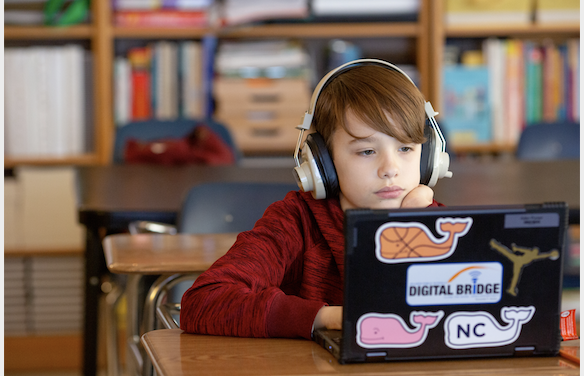From the beginning of the pandemic, school system leaders understood that some students would need a remote school option this coming school year. Now, with infection rates on the rise in many communities and some parents fearing for their family’s safety, K-12 leaders are facing the daunting challenge of creating higher quality remote-only schooling than they were able to deliver after schools shut down in March.
Through our work with district leaders to develop COVID Comeback School Models, ERS has identified three key decisions district leaders must make about remote school that have outsized impacts on cost and feasibility—and big policy implications.
Decision 1: How should remote school be staffed?
Because remote schooling isn’t constrained by the size of classrooms, it does not require the same staffing levels as traditional in-person school. With the right structure and effective professional learning opportunities, some remote teachers could provide instruction to more students in a single day—especially at the middle- and high-school levels and in situations where physical distancing limits in-person class sizes.
In addition, because experts suggest organizing remote instruction to balance direct instruction with independent time, teachers have more flexibility to serve more students or work with smaller groups. In a traditional elementary school, for instance, a single educator could teach one group of students for two or three hours in the morning and another in the afternoon, further expanding her reach or creating smaller group sizes; when she is not working directly with students, they could be completing independent or small group work, participating in art, music or PE, or receiving targeted support from another educator.
Leveraging the flexibilities of the remote structure could require fewer resources.
Decision 2: Will remote learning be linked to each student’s school or operate across multiple schools or the entire district?
Aligning a remote model to each traditional school makes it easier to sustain school culture and relationships through the pandemic, and to ensure a smooth transition back to full in-person school. This approach also preserves school-specific instructional models, such as bilingual, STEM, project-based programs or other school specific curriculum or offerings.
But a scaled approach to remote instruction could enable a system to offer richer, more robust instruction to more students. For example, one highly effective teacher could coordinate and deliver instruction remotely for hundreds of students, working with a team of other educators to provide additional small group support, whether in person or online. Classes that some schools might struggle to sustain due to low enrollment could attract larger numbers of students, making such offerings financially feasible at a system level.
Educators who are adjusting to teaching remotely could learn from other teachers within a larger community of practice, driving rapid improvement that benefits all students who opt for remote school. Or those teachers could remain in the classroom if the district has a hybrid model.
Decision 3: Who will conduct the remote instruction?
In many systems, leaders will seek to reassign teachers from classroom positions to remote teaching jobs. But sometimes this means adding a class, which can be difficult to do without adding teaching positions.
Reassigning teachers will be easiest to manage in schools or districts with extra classroom capacity, allowing them to shift students to another classroom without exceeding maximum class size mandates. Consider two elementary schools in a district where maximum class size is 28 students. Re-assigning one teacher requires eliminating one in-person homeroom, but this has different implications in these two schools:
In one school, 81 third-grade students attend three homerooms with 27 students each. To free up one third-grade homeroom teacher to teach online while maintaining in-person class sizes of no more than 28 students, 25 students must opt for remote school.
The other school has more unfilled capacity: 88 third-grade students spread across four homerooms of 22 students each. Only four students would have to opt for remote school to free up one third-grade teacher, leaving three in-person classrooms of 28 students each.
Together, these decision points highlight several policy issues that leaders within and outside of school districts should reconsider as the 2020-21 school year plays out, including:
- Rigid class size maximums. Hard-and-fast cut points prevent school leaders from organizing resources in ways that best address student need.
- Rigidly defined teaching roles. In both in-person and remote school models, the most effective teachers have the potential to create powerful learning experiences for more students and lift the practice of whole teams of teachers—but only if leaders have the flexibility to create these differentiated roles.
- Rigid expectations for seat time. Remote models can make it possible for teachers to engage more students in more diverse ways, leveraging synchronous and asynchronous approaches that mirror how students work online.
Addressing these policies will not only enable the highest possible quality remote learning for families who need it in the fall, it will also lay the groundwork for a longer-term transformation of education for students.
[Read More: Inside Post-Covid Schools: Next Year and Beyond]
David Rosenberg is a partner at Education Resource Strategies, a national nonprofit.

